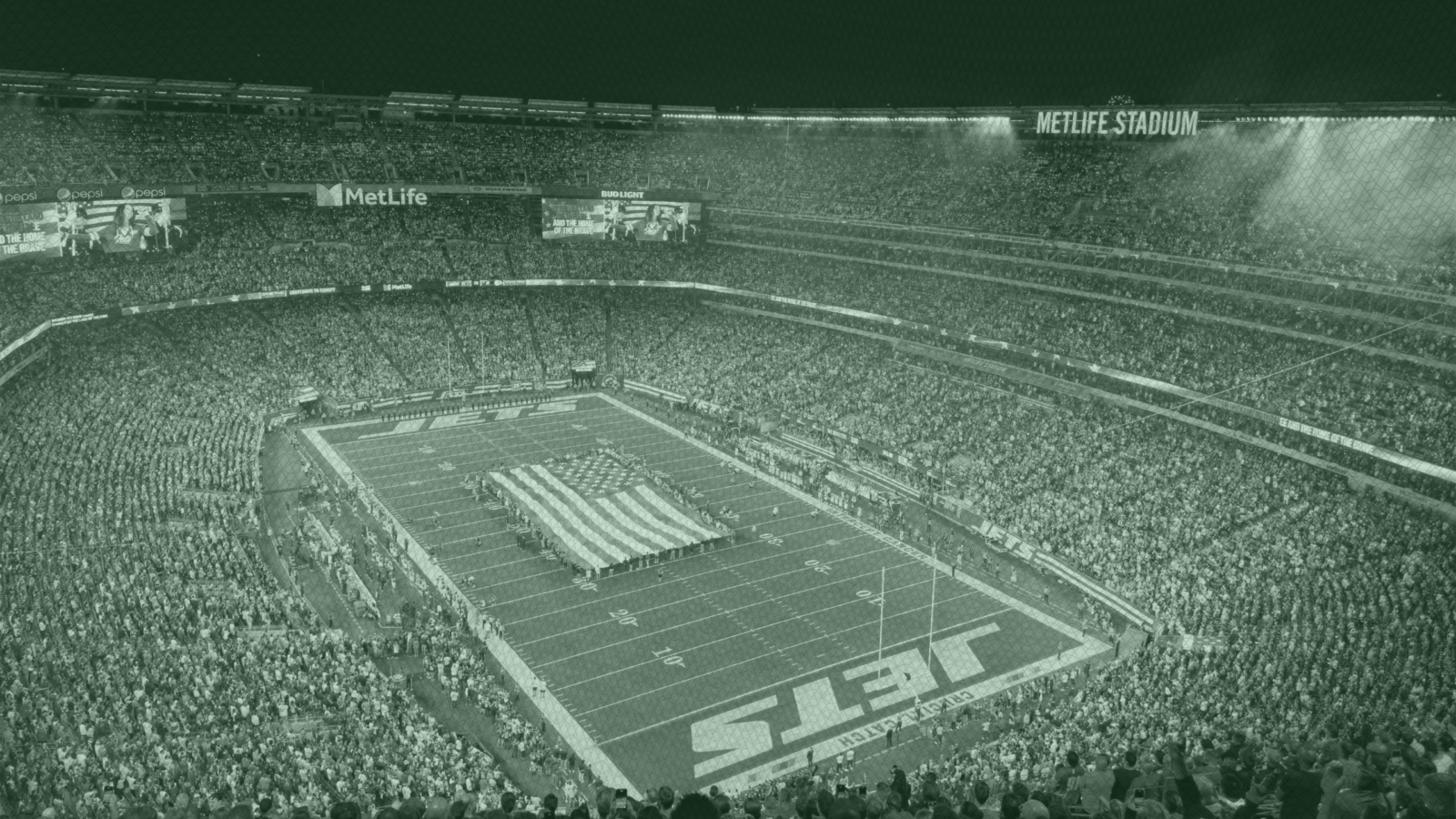Good morning.
It’s not just Amazon packages disappearing from front porches. Clients’ tax refund checks are also getting pinched in the mail.
One New York lawmaker said her office received 218 complaints of stolen checks totaling $3.8 million. After refundees realized the ploy and requested a replacement, some of those checks got stolen too, according to The Wall Street Journal. In fact, mailed tax refunds have now become a popular target for fraud. While it’s likely not going to make or break retirement plans, it is a troublesome — and potentially costly — issue for clients who prefer paper checks.
We’d strongly recommend the direct deposit option.
How Clients Can Invest in NFL Teams

Investors can now not only wager on the hottest NFL games, but place investment bets on their favorite franchises, too.
The National Football League is one of the last major global sports leagues to allow private equity firms to take minority stakes in individual franchises — a rule that paves the way for owners to raise fresh capital as team valuations skyrocket. Apparently, there aren’t too many investors with the pockets to cover $10 billion price tags. It also opens up the possibility for clients to sink investable assets into marquee dynasties like the Super Bowl Champion Kansas City Chiefs. (Taylor Swift not included.)
“Sports are such universal and passionate topics,” said Banríon Capital Management CEO Shana Sissel. “Who doesn’t want to own a piece of their favorite team?”
Put Me In, Coach
There’s reportedly massive interest in NFL teams from private equity managers that are hoping to create the world’s most entertaining alternative investments. The NFL voted to allow a handful of private equity managers to create funds, including Ares Management, Arctos Partners, Sixth Street, and a consortium led by Blackstone, Carlyle, CVC, Dynasty Equity, and Ludis. PE firms can acquire up to a 10% stake in a team; the investments must be held for at least six years, and are non-voting.
“I assure you if Blackstone decides to raise one, it’s not going to be small,” Sissel told The Daily Upside. They’re likely not going to be available to the masses — or the mass affluent. Sissel estimates:
- The funds will only be accessible to accredited investors, or those who generally meet $1 million in investable assets minimums, or income, thresholds.
- Sissel estimated previous sports-related funds closed in about a month, so time is also of the essence.
- Space in the closed-ends funds would be somewhat limited until demand increases.
“Advisors are starting to see” the possibility of investing in sports franchises, she said. “They just don’t know where to start.”
Benchwarmers. Major League Baseball and the National Basketball Association have already opened their doors to PE funds. About a third of all teams in both the MLB and the NBA are backed by PE, according to PitchBook. Ares became the undisputed investment heavyweight after it raised a $3.7 billion fund in 2022.
The private equity plays in NFL teams could become a significant new investment in the world of alternative assets, which are expected to top $2.5 trillion by the end of 2028. While financial advisors own roughly $1.4 trillion in less than fully liquid alternative investment assets in the US alone, retail investors are projected to almost double their holdings in alts over the next three years.
“We haven’t seen that shift happening yet,” Sissel said. “It has less to do with access, and more so with a lack of education.”
Looking to Grow Your Practice? Start Claiming Exclusive Appointments.
Money Pickle is revolutionizing client acquisition for financial advisors by offering exclusive, guaranteed-held appointments with qualified prospects, so you can spend more time building relationships and less time chasing leads.
Why join Money Pickle:
- Exclusive, pre-scheduled appointments with qualified prospects.
- Hand select the appointments that fit your ideal client profile, with no obligations.
- Guaranteed attendance or get a reschedule or full refund.
Join Money Pickle today and start connecting with prospective clients.
JPMorgan Wants In on the Great White North
ETFs give you more liquidity and they’re cheaper, eh?
JPMorgan plans to solidify a retail investment foothold in Canada by expanding staff in the country and listing two of its active exchange-traded funds on the Toronto Stock Exchange. Last week, investors in the Great White North were able to start trading shares of the S&P-focused JEPI and Nasdaq-centric JEPQ. JPMorgan Asset Management also announced it will add 20 jobs to its business in Canada — which accounts for $40 billion of its total global $3.3 trillion assets under management — over the next 18 months.
The goal is to double staff and capture 5% of the ETF market share north of the border, Travis Hughes, head of Canada for JPMorgan’s asset-management unit, told Bloomberg. Right now, three groups — the Bank of Montreal, Vanguard, and RBC iShares (a partnership between the Royal Bank of Canada and BlackRock) — collectively control roughly 66% of the market, according to BMO.
Oh, Canada
American investors have been moving savings from mutual funds to cheaper vehicles like ETFs in recent years. After operating an asset management business in Canada for the past four decades, JPMorgan believes Canucks will continue to do the same.
Investors shifted $800 billion from mutual funds to ETFs globally last year, JPMorgan Asset Management CEO George Gatch told Bloomberg, and he estimates that there is an opportunity to snag more market share:
- In September, ETFs gathered CA$5.8 billion, bringing year-to-date inflows to CA$49 billion, according to the National Bank of Canada. Also, 24 new ETFs launched in Canada last month.
- At the end of August, the AUM for Canadian ETFs totaled around CA$480 billion, a more than 31% increase year-over-year, according to the Canadian ETF Association.
Meanwhile, Canadian mutual funds have rebounded from more than CA$23 billion in outflows last year, but experienced year-to-date inflows of only CA$3.6 billion by the end of August, the Investment Funds Institute of Canada reported.
Almost Half of America Doesn’t Have Enough to Retire

Who needs quality time with the grandkids anyway?
People typically try to exit the workforce around their early to mid-60s and then coast on the savings they’ve built up for decades. But those goalposts are moving — about 45% of Americans will experience retirement funding shortfalls, according to a Morningstar simulation of spending data.
“Many Americans don’t sit down to think about retirement until they are relatively close to retirement,” Morningstar director of retirement studies and report author Spencer Look said in an email. This late-stage scramble can drive some to work until they’re 70, which can significantly reduce funding woes in retirement. Only 28% of those who work into their 70s are expected to encounter retirement issues, the report said.
Working Late?
Many macroeconomic and personal decisions contribute to poor retirement savings, Look said. Just a handful include stagnant wages, the general shift from pensions to 401(k)s, inflation and high interest rates, and long-term medical care expenses. The report also found:
- Public sector workers are the most prepared for retirement because of stable pensions. Those in the finance, insurance, and real estate sectors are also at lower risk due to higher median incomes.
- Agricultural workers are the most likely to face retirement shortfalls.
- Single women are particularly vulnerable, with 55% expected to encounter funding setbacks.
Washington Woes: Government assistance is in jeopardy, too. Today, about 68 million people, or 1 in 5 Americans, receive a Social Security check each month, but the money going into those benefits is at risk of running dry. The Congressional Budget Office recently estimated that the Old-Age and Survivors Insurance Trust Fund will “decline to zero” by fiscal year 2033, meaning by 2035, the value of monthly checks will decline by 23%.
Automate It: However, there are systems to help the average Joe and Josephine save more. Starting next year, employers will be required to automatically enroll employees in 401(k) and 403(b) plans as part of the SECURE 2.0 Act. Employees can still opt out if they choose.
Extra Upside
- Passive Aggressive: Active ETFs can be a subpar investment despite the enthusiasm, according to The Wall Street Journal.
- Bond Issuers Beware: Vanguard is looking to bring massive scale to a bond market it says is primed for change.
- Free Vacay? Sen. Elizabeth Warren ripped into the advice industry over some not-so-fiduciary perks tied to annuity sales.
- Private Parts. State Street teamed up with Apollo to file for a new fund that neatly packages private assets into an easy-to-trade ETF.
- Claim Exclusive, Guaranteed Appointments. Money Pickle connects you with pre-booked, 100% exclusive appointments with prospective clients who are looking to meet with a financial advisor. New appointments available daily (no minimums, no requirements). Meet your ideal clients through Money Pickle.*
* Partner
Advisor Upside is edited by Sean Allocca. You can find him on LinkedIn.
Advisor Upside is a publication of The Daily Upside. For any questions or comments, feel free to contact us at advisor@thedailyupside.com.

